|
Edward was born in Trebartha Hall in 1768 and at the age of 17 he went up to Oriel College at Oxford University to study Theology. In 1789 he was awarded his Bachelor of Arts degree; his masters degree came in 1792. His first incumbency was at the South Devon parish of Dittisham in 1802 but he continued his studies and earned his Bachelor of Divinity in 1803. In 1804 he took on his principal position as Rector of St Just-in-Roseland. In 1805 he was married at St Austell to Harriet, the daughter of Charles Rashleigh of Duporth and his wife Grace, née Tremayne. This is when the Tremayne family name became linked with the Rodd family.
Edward and Harriet had seven children, all born in St Just-in-Roseland, and named them after members of the family:
Edward's position on the Rodd family tree:
click for larger image
|
Edward and Harriet's children were: |
1. Francis Rodd Justice of the Peace, Deputy Lieutenant for Cornwall (1806-1880) was named after Edward's father.
Francis married Mary Rashleigh in 1837 in Wickham in Hampshire, where her father was the rector. His portrait (below left, click for complete image) is in the collection of The National Portrait Gallery.
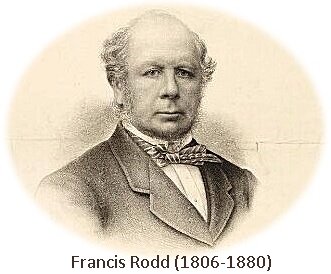 Francis was educated at Cambridge University and when a student used to travel there from the family home at St Just in Roseland, first sailing a boat across to Falmouth, and then taking the mail coach to London. He inherited the Trebartha Estate when his father died in 1842. With his younger brother, Charles, he was keen to advance agriculture and they were members of the East Cornwall Experimental Club for the Advancement of Agriculture. A report given by Francis, with a contribution from Charles, demonstrates their interest in applying manures to improve crop yields. Francis was educated at Cambridge University and when a student used to travel there from the family home at St Just in Roseland, first sailing a boat across to Falmouth, and then taking the mail coach to London. He inherited the Trebartha Estate when his father died in 1842. With his younger brother, Charles, he was keen to advance agriculture and they were members of the East Cornwall Experimental Club for the Advancement of Agriculture. A report given by Francis, with a contribution from Charles, demonstrates their interest in applying manures to improve crop yields.
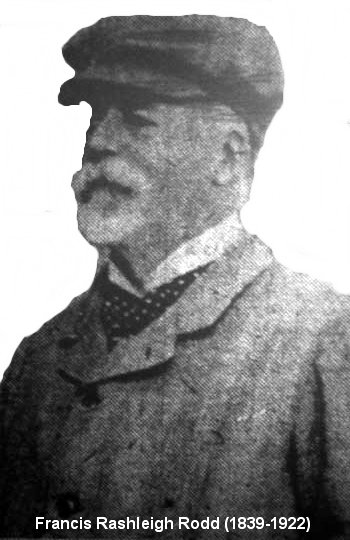 Francis and Mary had four children, the eldest of whom was named Francis Rashleigh Rodd, who inherited the Trebartha Estate upon his father's death in 1880. The youngest was Edward Stanhope Rodd, JP (1848-1928) who inherited the estate when his elder brother, Francis, died in 1922 without children. (The 'Launceston Then!' website has produced a biography of Francis Rashleigh Rodd (pictured here) and it has been reproduced with the kind permission of the website administrators. Francis and Mary had four children, the eldest of whom was named Francis Rashleigh Rodd, who inherited the Trebartha Estate upon his father's death in 1880. The youngest was Edward Stanhope Rodd, JP (1848-1928) who inherited the estate when his elder brother, Francis, died in 1922 without children. (The 'Launceston Then!' website has produced a biography of Francis Rashleigh Rodd (pictured here) and it has been reproduced with the kind permission of the website administrators.
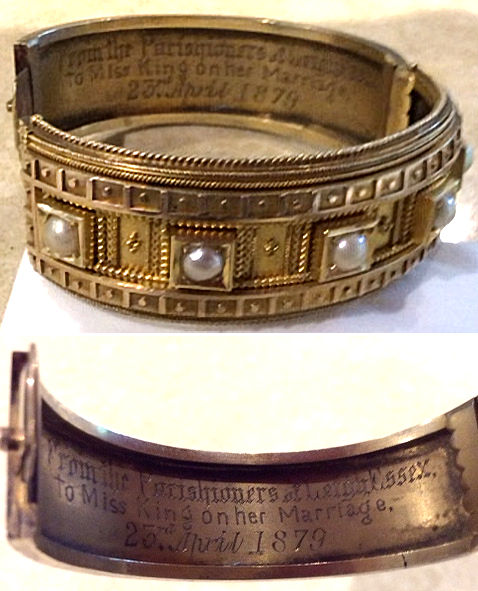 Edward Stanhope Rodd (1848-1928) married twice. His first marriage to Dora Clarke took place in Toddington, Bedfordshire in September 1875. Sadly, Dora died just two months later. Edward's second marriage was in Leigh on Sea in Essex in 1879 to Annie Stuart King. Edward Stanhope Rodd (1848-1928) married twice. His first marriage to Dora Clarke took place in Toddington, Bedfordshire in September 1875. Sadly, Dora died just two months later. Edward's second marriage was in Leigh on Sea in Essex in 1879 to Annie Stuart King.  A newspaper report of the lavish wedding was reported in the Chelmsford Chronicle. The report describes a bracelet that was given to Annie by the local parishioners and this is proudly now in the possession of Edward and Annie's great granddaughter. A newspaper report of the lavish wedding was reported in the Chelmsford Chronicle. The report describes a bracelet that was given to Annie by the local parishioners and this is proudly now in the possession of Edward and Annie's great granddaughter.
The Trebartha Estate passed to Edward Stanhope Rodd's son, Major Edward Francis Stanhope Rodd, in 1928. Major Rodd sold the property in 1940. The end of the Trebartha Hall occupied by the Rodd family was published in the Western Morning News of 24 Feb 1949.
|
2. Reverend Charles Edward Rodd (1807-1885) was named after Harriet's father and Edward himself. He was Rector of North Hill from 1832 until his death in 1885. In 1834 he married Emma Harvey of Ross in Herefordshire in that town. It would appear that the links with Herefordshire remained even though it was over a century since the Rodd family inherited the Trebartha Estate and around two hundred years since this branch of the family left Herefordshire - unless this is just a coincidence.
Click on this link to read the story of the short life of his son, Charles Edward Rodd (1849-1865), shown here. |
 |
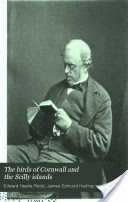 3. Edward Hearle Rodd (1810-1880) was named after his father and his mother's maiden name formed his middle name. 3. Edward Hearle Rodd (1810-1880) was named after his father and his mother's maiden name formed his middle name.
Edward was educated at Ottery St Mary school, and trained for the law, being admitted to practise as a solicitor in Trinity term 1832. In January 1833 he settled at Penzance, where he entered into partnership with George Dennis John. On John's death in 1847 Messrs John and Rodd became John, Rodd and Darke and after the latter's death the firm became Rodd & Cornish. He had also held many official posts in the town. He was town clerk from 1847, clerk to the local board from 1849, clerk to the Board of Guardians from the passing of the Poor Law Amendment Act 1834, and superintendent registrar, besides being head distributor of stamps in Cornwall from 1844 to 1867.
Edward retired about 1878 leaving the practice to Thomas Cornish. He died unmarried at his home, 4 South Parade, Penzance on 25 January 1880, and was buried in St Clare Cemetery, between Penzance and Heamoor.
A carillon, costing about £300 and paid for by public subscription, was installed in St Mary's Church as a memorial to Edward. The first to be erected in Cornwall, it was completed by Gillett, Bland & Co on 10 November 1880 and plays fourteen tunes. A tune was played for two weeks, every four hours at 8 am, noon, 4 and 8 pm, midnight and 4 am. The carillon uses the eight bells, which were installed in 1865 for £950.
 Edward was an ardent ornithologist, and especially interested in the question of migration. He studied minutely the avifauna of Cornwall, and it was entirely due to his efforts that many a rare bird was rescued from oblivion, while several species were added by him to the list of British birds. He contributed upwards of twenty papers on ornithological matters to The Zoologist, the Ibis, and the Journal of the Royal Institution of Cornwall from 1843 onwards. "The Birds of Cornwall and the Scilly Isles" by Edward Hearle Rodd was published by subscription, the classified advertisement for it appeared in 1877. The book was published after his death in 1880, having been edited by Mr J E Harting. Edward was an ardent ornithologist, and especially interested in the question of migration. He studied minutely the avifauna of Cornwall, and it was entirely due to his efforts that many a rare bird was rescued from oblivion, while several species were added by him to the list of British birds. He contributed upwards of twenty papers on ornithological matters to The Zoologist, the Ibis, and the Journal of the Royal Institution of Cornwall from 1843 onwards. "The Birds of Cornwall and the Scilly Isles" by Edward Hearle Rodd was published by subscription, the classified advertisement for it appeared in 1877. The book was published after his death in 1880, having been edited by Mr J E Harting.
Edward had a large collection of specimens and when speaking to "The Penzance Natural History and Antiquarian Society" in 1847 he said that he wished to state that his collection was open for the inspection of everybody", he did not wish "to have any collection of his kept in a dungeon". His collection of at least forty-five cases with 270 specimens, mostly from Cornwall, passed to his nephew Francis Rashleigh Rodd, at Trebartha Hall, Launceston. The collection now forms a part of the holdings of the Royal Cornwall Museum in Truro. |
4. Reverend Henry Tremayne Rodd BA DD (1811-1893) was given a middle name from Harriet's mother's maiden name.
 Henry went up to Oxford University in 1830 to study for the cloth. After other positions within the church, including a time as curate at Breage, he became the Vicar of Gwinear in 1851 which was the year of his marriage to Marianne Baillie Sutton. In 1888 he gave up the living at Gwinear and his departure was reported in the Cornish Telegraph as "Much interest is being excited at Gwinear in the question as to who will be the successor to the Rev. Henry Tremayne Rodd. The Retiring Vicar, by his amiability and catholicity, has won the respect of all the villagers, and hopes are expressed that the Bishop of Exeter will prefer a gentleman of broad views to the living." In 1891 Henry was made an honorary canon of Truro Cathedral. He died in 1893. Henry went up to Oxford University in 1830 to study for the cloth. After other positions within the church, including a time as curate at Breage, he became the Vicar of Gwinear in 1851 which was the year of his marriage to Marianne Baillie Sutton. In 1888 he gave up the living at Gwinear and his departure was reported in the Cornish Telegraph as "Much interest is being excited at Gwinear in the question as to who will be the successor to the Rev. Henry Tremayne Rodd. The Retiring Vicar, by his amiability and catholicity, has won the respect of all the villagers, and hopes are expressed that the Bishop of Exeter will prefer a gentleman of broad views to the living." In 1891 Henry was made an honorary canon of Truro Cathedral. He died in 1893.
|
5. Harriet Grace Rodd (1813-1895) was named after her mother and her maternal grandmother, Grace Tremayne.
Harriet married the Reverend Edward Fursdon in 1838. He had taken over the living at Lamerton in Devon when Harriet's father gave up the parish to take control of the Trebartha Estate in 1836. |
6. John Rashleigh Rodd (1816-1892) had three great grandparents named John or Jonathan and his mother's maiden name was Rashleigh.
John Rashleigh Rodd was the fifth and youngest son of the Edward and Harriet Rodd. Harriet was the eldest daughter of Charles Rashleigh, Esq., of Duporth, in Cornwall. John entered the Royal Navy on 13th May 1830; he passed his examination in 1836; he obtained the rank of Lieutenant, as a reward for his services on the coast of Syria, including the bombardment of St. Jean d’Acre on 4th November 1840; on 11th June 1841 he joined HMS Scout, an 18 gun frigate before transferring to the 50 gun HMS Dublin on 19th August 1841. Much of the ensuing time was spent in the Pacific. Promoted to First-Lieutenant, he served on HMS Fisgard 42 from 21st December 1844. Returning to home waters he was Senior on HMS Illustrious from 16th May, 1848. It was depot-ship of Ordinary at Portsmouth. John retired from the Royal Navy as a Captain in 1866.

| 1852. Marriage solemnized at All Souls Church in the Parish of St Marylebone in the County of Middlesex |
| No. |
When Married |
Name and Surname |
Age |
Condition |
Rank or Profession |
Residence at the Time of Marriage |
Father's name and Surname |
Rank or profession of Father |
| 3 |
25
August
1852 |
John Rashleigh Rodd
Wilhelmina Mary Rodd |
|
|
|
| All Souls District | District of The
Holy Trinity |
|
| Edward Rodd | John Tremayne
Rodd |
|
Clerk in Holy Orders
DD (Dec'd) | | Vice Admiral (Dec'd) |
|
 John Rashleigh Rodd married his cousin Wilhelmina, the daughter of Sir John Tremayne Rodd when he was Commander of HMS Impregnable. The service was conducted by the groom's brother, Charles Rodd who described himself on the certificate as 'CofE Minister'. It was common in the Rodd family for one or more of the family's ordained ministers to travel great distances to conduct family marriage ceremonies. John Rashleigh Rodd married his cousin Wilhelmina, the daughter of Sir John Tremayne Rodd when he was Commander of HMS Impregnable. The service was conducted by the groom's brother, Charles Rodd who described himself on the certificate as 'CofE Minister'. It was common in the Rodd family for one or more of the family's ordained ministers to travel great distances to conduct family marriage ceremonies.
The witnesses were Wilhelmina's elder brother James Rennell Rodd, William Makepeace Thackeray (pictured here) and other members of the Thackeray Family who were great friends of Wilhelmina's branch of the Rodd family. Thackeray was a celebrated novelist, author and illustrator; he was most famous for his satire on modern society, 'Vanity Fair'. Many of the Rodd family attended the funeral of William Makepeace Thackeray in London 1863 as principal guests.
John Rashleigh Rodd died in 1892 and Wilhelmina died in 1903.They had no children. |
| 7. Sophia Jane Rodd (1817-?) had a middle name from Edward's mother.
She married widower Reverend John Martin in North Hill in 1856. He was the Vicar of St Andrew the Great in Cambridge. |
|
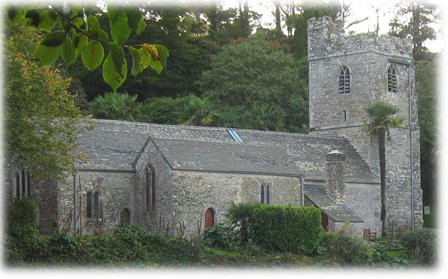
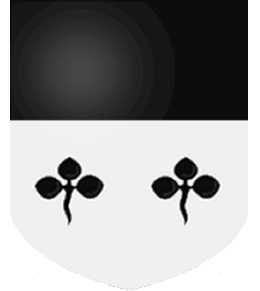




 Francis and Mary had four children, the eldest of whom was named Francis Rashleigh Rodd, who inherited the Trebartha Estate upon his father's death in 1880. The youngest was Edward Stanhope Rodd, JP (1848-1928) who inherited the estate when his elder brother, Francis, died in 1922 without children. (The '
Francis and Mary had four children, the eldest of whom was named Francis Rashleigh Rodd, who inherited the Trebartha Estate upon his father's death in 1880. The youngest was Edward Stanhope Rodd, JP (1848-1928) who inherited the estate when his elder brother, Francis, died in 1922 without children. (The '


 3. Edward Hearle Rodd (1810-1880) was named after his father and his mother's maiden name formed his middle name.
3. Edward Hearle Rodd (1810-1880) was named after his father and his mother's maiden name formed his middle name.

 John Rashleigh Rodd married his cousin Wilhelmina, the daughter of
John Rashleigh Rodd married his cousin Wilhelmina, the daughter of